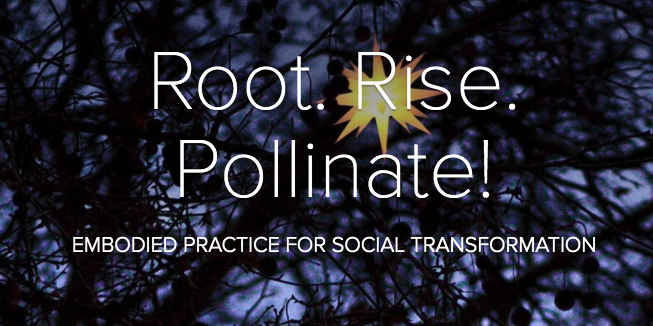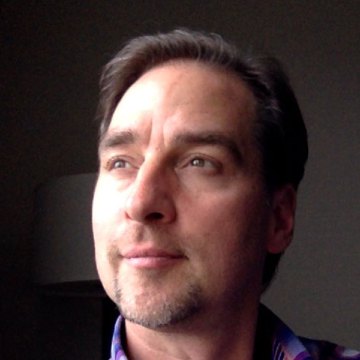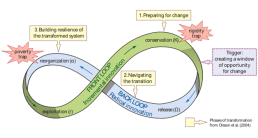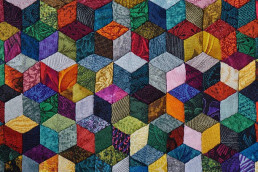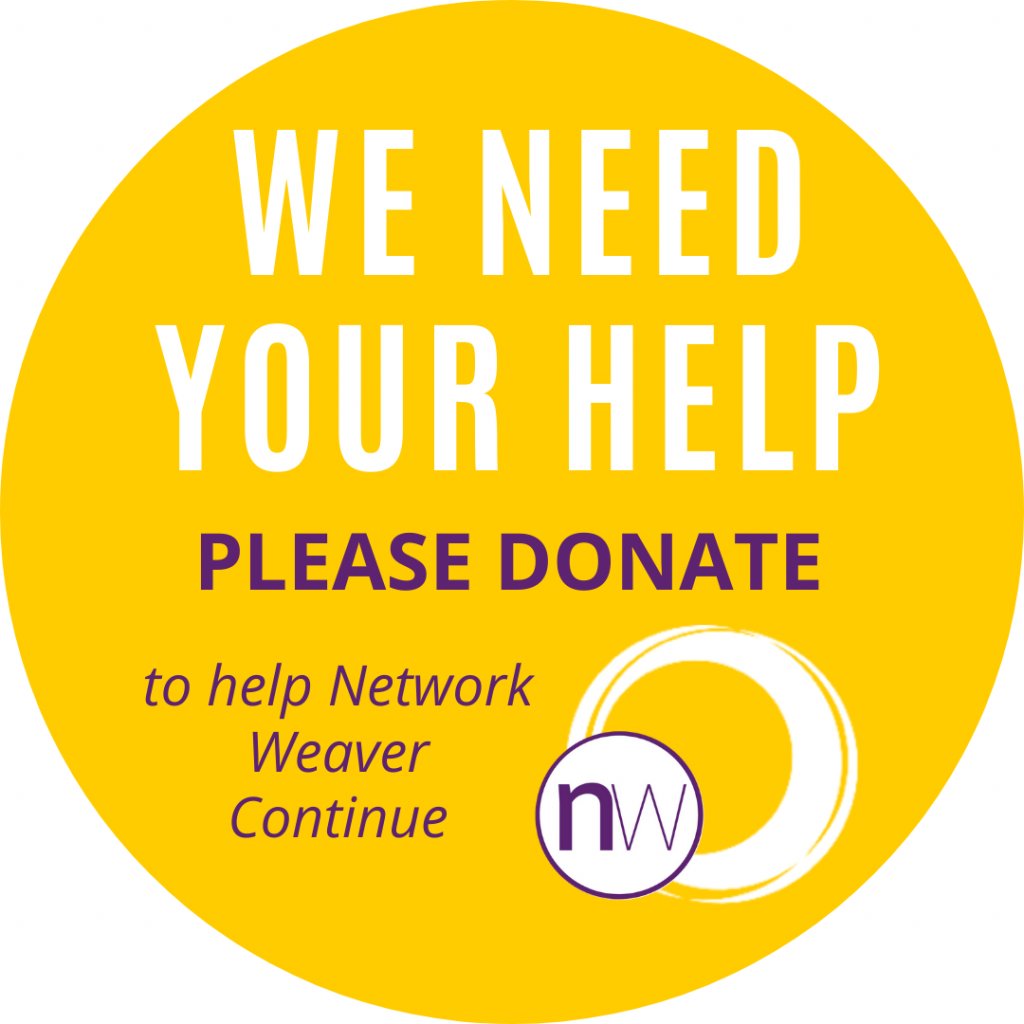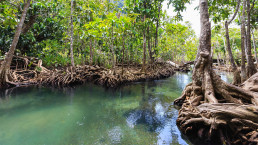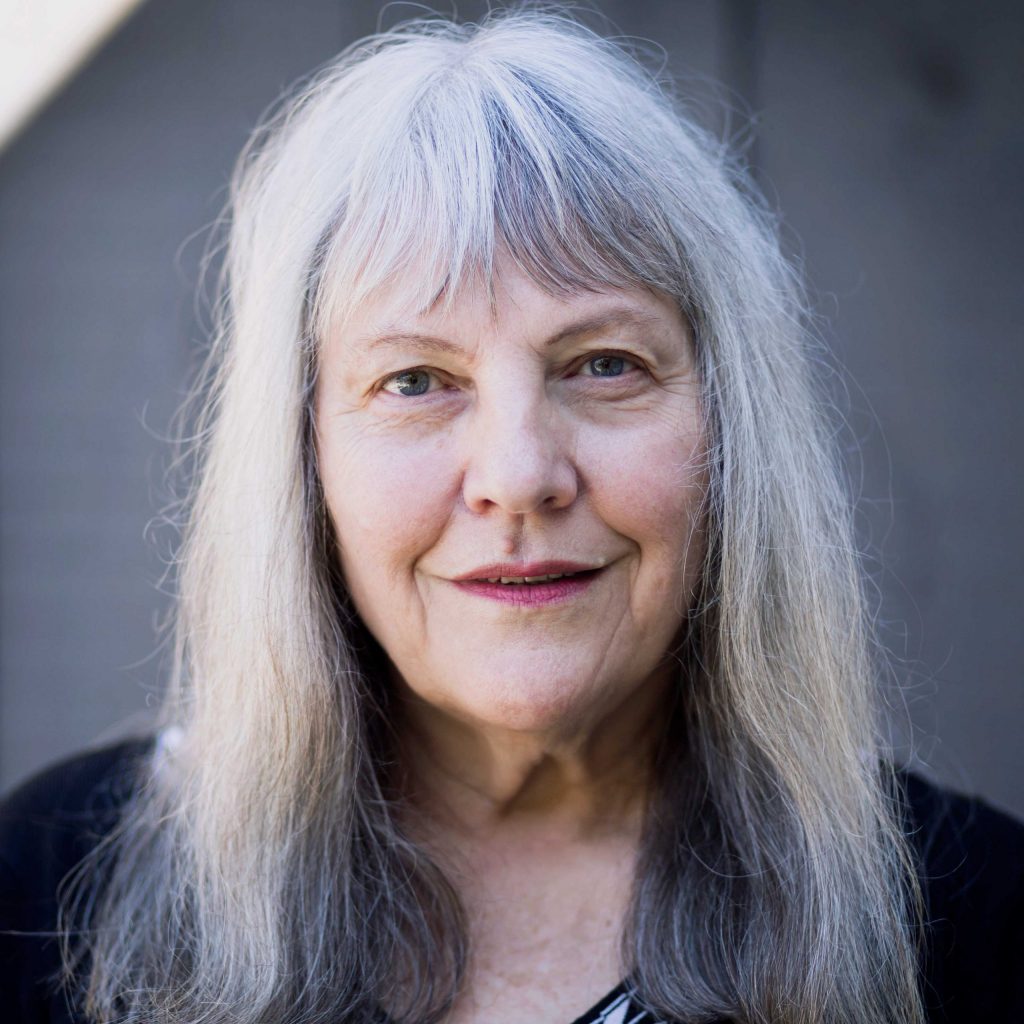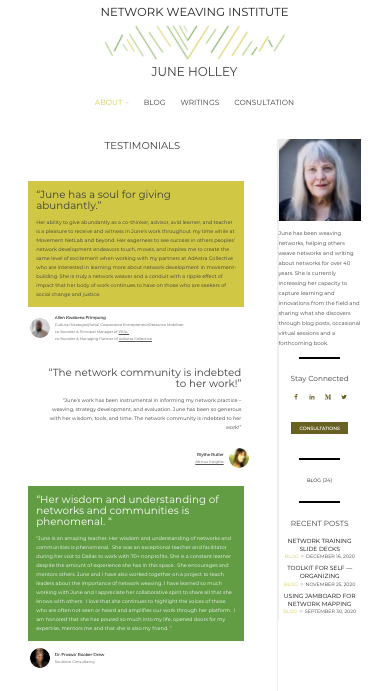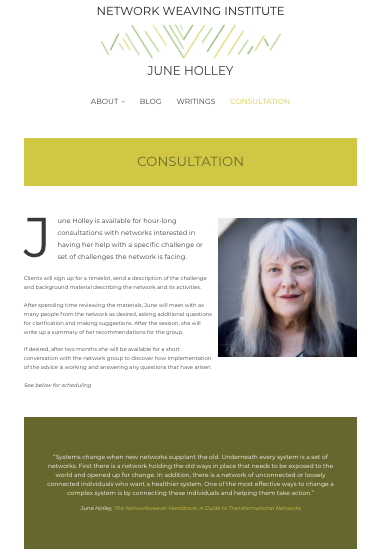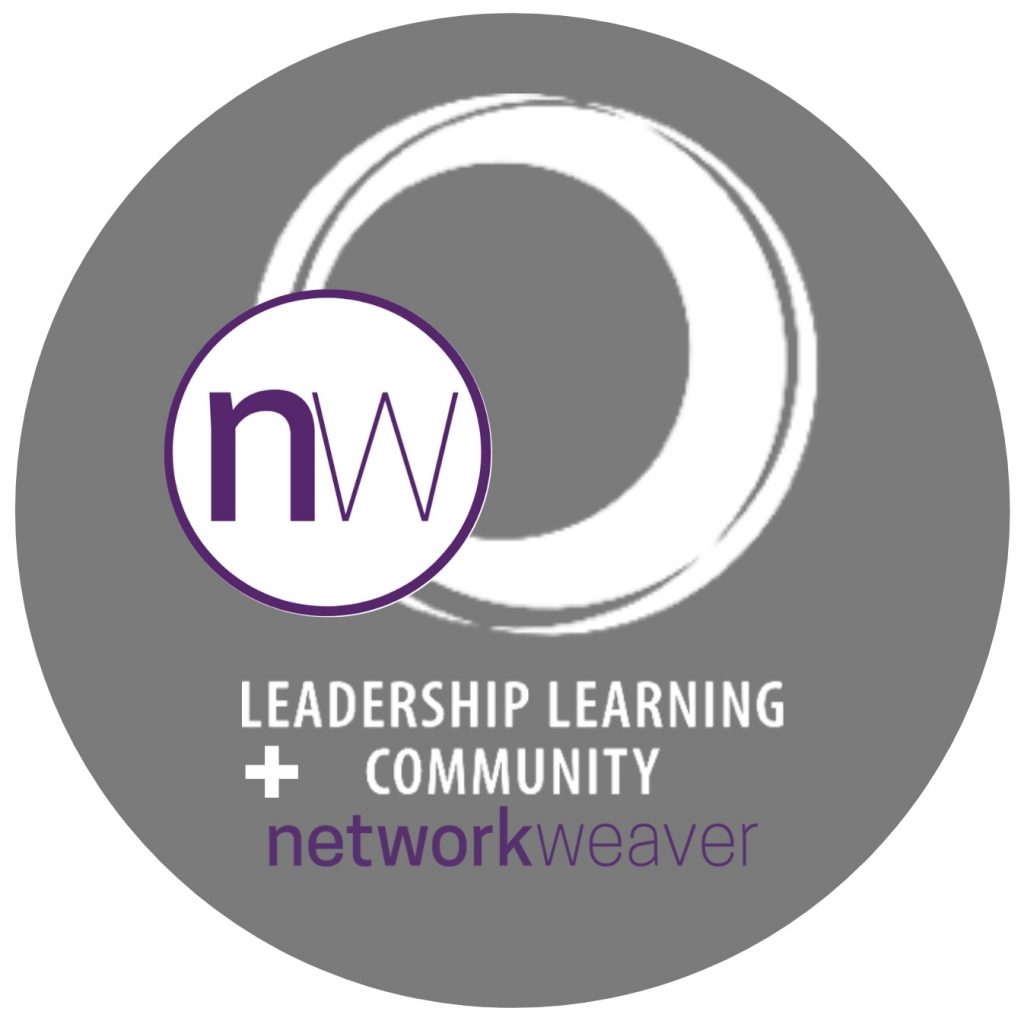Taking a Virtual Breath
This week, Network Weaver is excited to share a 3-part series by Root. Rise. Pollinate! on fostering connection in virtual space. The series was originally published earlier this year at The Reverb.
How shared practices can create depth and connection despite physical separation
As we settle into our second year of physical separation wrought by the COVID-19 pandemic, our sense and practice of community and connection is stretched. We continue to maintain physical separation as an act of safety and care for each other for the foreseeable future.
The experience of physical separation is not only an experience between each other, but also within ourselves, as individuals.
If you stop and pay attention for a moment, and look away from your screen, can you locate where your breath currently sits? Is it in your throat, your chest, your belly, somewhere else?
When was the last time you intentionally noticed how your body moves: perhaps danced, stretched luxuriantly, or massaged yourself? When was the last time you listened for birdsong or paid attention to the ground holding you up? Or perhaps the physicality of all this is too much to bear?
In this time, many of us have the opportunity to deepen our practices of care, connection and community, bridging distance across time and space. We still get to support, celebrate, and be with each other albeit in virtual space. We get to be even more aware of why and how we do this.
Practices of connection with self and community are essential for us to harness and nurture the kind of energy needed not only to get us through hardship but also to imagine and bring forth futures of thriving, interdependence, and wholeness.
Over the past year Root. Rise. Pollinate! experimented with how to cultivate care, connection and community with feminist change makers around the world. We are going to share the virtual connection practices we developed in a series of three posts over the next few weeks. These practices were especially meaningful because they helped create a real sense of intimacy, care and depth even though we were separated physically by time, space and the pandemic. This was possible because the practices hinged on building authentic relationships, exchange, and building on each other’s wisdom.
The first post in our series focuses on how to open and set the space through breath practice and ritual. Subsequent posts will focus on embodied practice and intergenerational practice. We hope these offerings support you in this time of continued physical separation.
Setting the Scene: Preparing to be in Virtual Space
Even though we are limited to virtual rooms, it is still possible for us to “set the space” and create conditions for your group to experience authentic connection.
The most important thing is our attention and awareness. Before each session, invite community members to be in — and to the extent possible — protect a comfortable space with few distractions or disruptions for the duration of your time together. As participants arrive, play music whose energy captures how you want the community to feel during and after each session. Also invite community members to be and stay on camera if possible and to let go of any (assumed) judgement of their physical space or appearance. This preparation is particularly important as it creates the opportunity to arrive and stay in space with more ease.
Virtual gatherings make it so we miss out on some of the cues that we’d typically rely on in-person. How do we set and read energy in the ‘room’? What new cues do we need to tune into where body language subtleties are lost? How might we arrive together sans hugs, handshakes, and kisses? We propose setting and entering space with and through breath practice and ritual.
The Power of Breathing Together
Some research findings suggest that choir members, through synchronizing their breath and voices when singing, also synchronize their heartbeats.
This kind of connection, heart to heart, is important when setting energy that fosters connection for community building in virtual space.
Guided breath practice, which lasts for 10–15 minutes allows community members to:
- get out of their heads and release — at least for a little while — from whatever they have been doing or thinking prior to the session, and
- be with their individual breath as part of a collective, breathing organism
This practice may take the form of the group participating in five rounds of a five-breath sequence together, with accompanying physical movement. This works best when one person leads and provides cues for the group.

Breath (and physical movement) Practice
Coupling the breathing with physical movement ensures that community members arrive within themselves, their own bodies, as they arrive with the community as well.
Palms facing up, interlace your fingers just below your belly button.
Inhaling
- As you inhale slowly, move your arms up
- As you get to chest level, rotate your palms (face down then quickly face up again) to allow you to bring your interlaced palms above your head with ease. Pay attention to the sensations in your shoulders. If you have any tightness, lower your arms to the level at which the tightness releases.
Exhaling:
- Turn your upturned interlaced palms to face down
- Slowly exhale as you bring your arms back to just below your belly button. Aim for your exhale to be longer than your inhale
This completes a round of breath.
- Round one: inhale in silence, exhale in silence (five times)
- Round two: inhale in silence, exhale with a hum (five times)
- Round three: inhale in silence, exhaling with one vowel — a (ah), e (eh), i (ee), o (oh), u (oo) — on each breath
- Round four: inhaling in silence, exhaling with a hum (five times)
- Round five: inhaling in silence, exhaling in silence (five times)
Arrival breath-work is about opening and holding space for community members’ hearts to connect and beat as one in preparation for whatever conversations or work that lies ahead.
Once the community is breathing as one, then you can move into shared ritual in order to continue to deepen connection.
Ritual: Setting Space and Coming to Center Together
Rituals have long been part of human existence across different cultures bringing community together in times of joy and celebration, in times of grief and mourning, to commune with the spirit realm, to assuage anxiety or prepare us for big undertakings — to get us through life. In an ever-busy world, where many peoples have lost touch with ritual, particularly communal rituals, the slowing down, the great pause brought on by COVID-19 created an opportunity to practice and reëngage with, or perhaps create new rituals.
We rooted in rituals and conscious practices to bring the group together in a focused, energized way. In light of the COVID-19 pandemic, rituals for self-care and healing are essential as are rituals and practices that deepen our sense of spirit-rootedness and collective thriving. Rituals may be rooted in a tradition or culture, or be co-created in groups. Below we share two rituals around water and fire.
Creating a Community Water Font
Tewa elder, Kathy Sanchez from San Ildefonso Pueblo in New Mexico modified an in-person water ritual for virtual space, inviting the community to acknowledge, honor, and commune with water as a life-giving and life sustaining source.
Invite community members to bring water into space in a ceramic, earthenware, or similar vessel forged from living material.
Participants name the source of their water — river, stream, watershed, etc. and share reflections on water in their lives including how it heals and lives in and through each community member. Community members then imagine pouring, and therefore mixing their water, into a vessel where many waters flow as one.
Building a Communal Fire
Invite community members to bring a candle and matches or lighter into space. At a designated time, those leading the space invite community members to each light their candles and share their internal wisdom about how this element — and indeed all elements — show up in our external and internal lives as life-giving and sometimes destructive forces as we build towards thriving communities and futures.
Rituals such as these enable community members to thoughtfully bring their individual experience into the community as part of building a collective ritual, which they can carry beyond virtual space.
An Invitation
As we close out this post, we invite you to practice some of what we’ve shared — perhaps first with yourself, and then with a friend or colleague. You can begin by just taking one breath, consciously inhaling and then exhaling. Consider, what difference might it make to our collective futures if we regularly synchronized our heartbeats? Stay tuned for the next offering on embodied practice.
Read post 2 HERE and post 3 HERE.
Originally published March 4, 2021 at The Reverb.
Root, Rise, Pollinate! is an experiment that aims to catalyze and nurture a transnational community of feminist human rights advancers, organizers and movement builders using embodied practice for social transformation.
PLEASE DONATE to help Network Weaver continue in it’s mission to offer free support and resources to networks worldwide.
Thinking Like an Octopus (and With a Collaborative Heart): Evolving and Interlocking Networks
“You’ve got to keep asserting the complexity and the originality of life, and the multiplicity of it, and the facets of it.”
Toni Morrison
A network that I have been a part of for a number of years is seeing the emergent proliferation and strengthening of other related networks (some more adjacent than others) in its shared geographic and issue spaces. While this is welcomed overall, and sets up the potential for a more robust movement network and core-periphery structure (see image below), there are also some discussions within the network about how this proliferation constitutes an opportunity versus a looming threat or conflict.

There is plenty being written about the power of collaboration to solve complex problems and shift undesirable patterns, and one of the persistent barriers to collaboration is the default competitive and protective instinct found in individuals and groups. There are good and long-standing evolutionary reasons for “watching out for number one,” so this impulse can be fairly baked in. And there are also good reasons for understanding and leaning into “collaborative advantage” (see, for example, the work of evolutionary biologist David Sloan Wilson on multi-level selection).
“One step is to recognize that ‘ideologies extolling individualism, competition, untrammeled free markets, and conversely, disparaging cooperation and equality’ (as Turchin puts it) have no scientific justification. An unregulated organism is a dead organism, for the body politic no less than our own bodies.”
David Sloan Wilson
And of course, there are plenty of examples of “taking the high road” only to have someone else take advantage of this, which can leave us feeling like we are living in the prisoner’s dilemma. So what is a network to do? Well, if your values include collaboration and justice, then you do your best to lead by example. Which is where a recent network stewardship team conversation left us. And as often happens with this group, things continued to marinate and then one of our members sent the following beautiful email, reminding us of her experiences in a related network of networks.
“The dynamics we discussed reminded me a lot of what we have experienced at our organization since 2009, so if you’ll indulge me for a few minutes I’ll try to lay it out here. In late 2007, we piloted a new cooperative venture and launched the FL Collaborative in 2009. Our vision and aspirations were to bring a cross sector of people and organizations together to address the root causes of the problems facing our sector and relevant communities.
One of the first things the FL Collaborative really wanted to focus on was replicating the cooperative model, and our organization was tasked with doing that. And we did. Pretty soon it became clear that we couldn’t both do that and hold the bigger vision and aspirations. But to be honest, I didn’t want to admit that.
By 2011, the LC Network started to emerge from the FL Collaborative. My first reaction was that we have competition. But very soon it became clear that the LC Network was serving a role our staff and the FL Collaborative couldn’t serve. The LC Network was beginning to pull together elements of what it takes to shift the supply chain from one that is value-less to one that is value-full. The kind of technical support the sector and visionaries needed began to emerge through the LC Network.
By 2014, the SF Network (another network) began to percolate out of the FL Collaborative. And again I found myself triggered by the potential competition. What the SF Network was beginning to offer was the ‘social’ space. When our organization and the FL Collaborative were hosting a series of community gatherings and various social events that allowed us to have a public facing part, SF was emerging as being able to offer that. Another thing we could take off of our staff’s plate so we can focus on our bigger vision and aspirations.
The FL Collaborative, in the meanwhile, began to morph into the political and advocacy space. That’s where we think through policy shifts, organizing opportunities, connectivity, and alignment around the broader vision of what the future of the sector and larger system can look like and what it might take to get us there. Those who are engaged in each of these networks are doing things that they can easily wrap their heads around and inspires them most.
Today, I talk about these three networks as three tentacles of an octopus with our organization holding the space of the head of the octopus. Because our staff was not liberated to focus more fully on the shared values, bigger vision, the bigger story, connectivity, etc., all these three networks are interlocked by a shared set of values, a common vision, and organizing strategies.
Our staff are the ones who are asking the bigger questions of each of these networks when they seem to go off track. We are the ones who are finding the resources needed to get them to think about how racial equity is or isn’t showing up there (and we get most of that from [the network for which the readers of the email are the stewardship team]). So without sounding too egotistical, our staff is tasked with holding the moral center of all of this work whether it comes to the connections, strategies, resources, stories, organizing, etc. There is probably a better word than the moral center, but that’s the only thing that is coming to me right now.
More tentacles might emerge, and I hope they do as we identify gaps in this work. And I hope I can remain humble enough to not see them as competition but as a valuable addition to the family.“
It takes work, real intention and effort, to stay grounded and humble, to practice discernment and to keep perspective, to keep asserting the larger picture of complexity, to honor the need for deeper collaboration and more allies, to have faith in the possibilities that we cannot yet see through the growing entanglement of intersections. Even better when you can depend on others to help you out with this! With #gratitude to so many.
“Weave real connections, create real nodes, build real houses.
Live a life you can endure: Make love that is loving.
Keep tangling and interweaving and taking more in,
a thicket and bramble wilderness to the outside but to us
interconnected with rabbit runs and burrows and lairs.Live as if you liked yourself, and it may happen:
reach out, keep reaching out, keep bringing in.
This is how we are going to live for a long time: not always,
for every gardener knows that after the digging, after
the planting,
after the long season of tending and growth, the harvest comes.”
Marge Piercy, from her poem “Seven of Pentacles”

Originally published at Interaction Institute for Social Change
Featured Image from Giulian Frisoni
Curtis Ogden is a Senior Associate at the Interaction Institute for Social Change (IISC). Much of his work entails consulting with multi-stakeholder networks to strengthen and transform food, education, public health, and economic systems at local, state, regional, and national levels. He has worked with networks to launch and evolve through various stages of development.
PLEASE DONATE to help Network Weaver continue in it’s mission to offer free support and resources to networks worldwide.
Power of Networks: Interconnectedness Drives Change
Our world is beset by societal challenges that are large, complex, dynamic and highly contextual. Networks can play a transformative role in resolving these challenges by sparking an interconnected web of actors and actions. Catalysing networks is key to enabling a sustainable ecosystem with diverse actors who have the capability to sense, synthesise and respond to societal problems by varied means – both normative and descriptive.
Networks are about relationships and interactions between actors in a system. Interactions can be of any type (e.g., consumes data, creates content, conducts workshops, etc.) which allow us to harness natural community responses and bridge the distance between those who need and actors who can.
In this 90 minutes webinar, Sanjay Purohit, Chief Curator – Societal Platform at EkStep Foundation, discussed the Power of Networks and covered:
- The importance of network effects and the view of a network as units of interactions – moving from 1:many interactions to many:many.
- The need to facilitate interactions between and within formal and informal networks, involving state, civil society and markets, to catalyse large-scale systemic change.
- How can digital platforms amplify the impact of these interactions and enable societal change at scale?
Sanjay Purohit, Chief Curator - Societal Platform, EkStep Foundation talks about the Power of Networks.
Originally published at Societal Platform
co-creating pathways for a resilient society
Societal Platform is a community of curators, catalysts, and network weavers. We pool our individual strengths and channel our collective imagination to enable social change leaders to advance their missions.
PLEASE DONATE to help Network Weaver continue in it’s mission to offer free support and resources to networks worldwide.
From Nature’s Mutualistic Networks to More Resilient Human Networks
We have been taught to live in a competitive, survival-of-the-fittest world. But what if this has been wrong? What if the natural world, and the humans in it, are much more cooperative than competitive?
The idea of the survival of the fittest originated in Darwin’s Origin of Species, and his theory of natural selection. Sure, natural selection does have a role to play in evolution, but it might not be as important as we had previously thought. In fact, some scientists assign it a weight of just 1 out of 10 concerning the evolution of certain processes, such as the evolution of the anatomy of species[i]. Other scientists suggest that evolution should not be considered in terms of species as separate from its environment, but at the level of the system itself (species + environment). Looking at it from this perspective, they maintain, is much simpler and governed by a much smaller set of laws, than analyzing the evolution of elements by themselves[ii].
We can find examples of mutualism and cooperation all over the natural world, from pollinators and plants, to animals and the microbes living in their guts. And in many cases this cooperation is not merely optional, but essential to life itself. Certain plants will not grow in soils where you cannot find a specific type of fungi, since they need to form a relationship with it in order to survive. Lichens are an association between a bacterium and a fungus. They are an organism that is an association of two different life forms, contradictory as the notion may seem. Trees communicate with each other through a network of mycorrhizae, a fungal structure invisible to the naked eye that connects their roots, transporting nourishment, messages and even teachings (yes, plants have cultural transmission and are able to learn from their neighbors)[iii].
And the human species is no exception. We have more bacteria living in our gut than we have cells in our bodies, and they influence our health, our moods and even our behaviors[iv]. Without them, we cannot survive. (Not to mention the fungi that live basically everywhere and the microscopic mites on our skin.) We are not just a single organism; we are a small cosmos of organisms. And like all other species, we are not meant to just compete, but to cooperate harmoniously with those around us.
What is conspicuous about cooperative interactions in the natural world is that they happen in networks. This a very familiar word in the human lexicon, since we network for just about anything: for business, for trade, for information exchange. What can we learn from these well-functioning natural cooperative networks that we can apply to our human ones, so that they are more resilient?
First of all, if we take a look at mycorrhizal networks in old-growth fir forests[v], we find that young saplings are established within the networks of veteran trees. Usually, the larger the trees (and the more resources they have), the more well-connected they are within the forest network. This highlights the importance of large mature trees in the architecture of the network, which have long life-histories of connection. Greater establishment of young saplings have also been shown when they are linked into the mycorrhizal network of larger trees. The lessons to learn from this are quite simple: if you have more resources, share them, and you will help others flourish. Also, we need multigenerational human networks: elders have a lot of wisdom to impart, and if youngsters are connected to them to “absorb” it, they are more likely to thrive.
The forest networks also have what we call small-world properties, meaning that individuals are closely knit together, and that you do not have to go through many to get from any one individual to another. Simple enough as well, right? Do not isolate yourself, if you connect and collaborate with others, you are also more likely to thrive in your community.
Forest network symbiosis is not just an affair between two or more organisms, but a complex assemblage of fungal and plant individuals that spans multiple generations. In them, fungus species form “living links” connecting trees and allowing them to communicate and exchange resources, and benefitting from the exchange as well. In our networks, human connections do not have to be strictly restricted to flows of information or products, they can be other people (facilitators, teachers, networkers), living links that enable effective exchange of any kind between other people or groups.

Last but not least, these networks are robust to perturbations, but fragile to the targeted removal of the “hubs”, large mature trees. If elders are left out or removed from contributing, the whole ecosystem is more likely to collapse.
So far, we have been looking at relatively simple networks, connecting individuals of a few species only, and belonging to the same forest “group”. Now let’s take it a step further and take a look at networks that involve far larger numbers of species interacting. And at the same time make an analogy with different “species” of organizations trying to cooperate.
There are several types of networks in nature, and they are of two main types: antagonistic (e.g: food webs, parasitism) and mutualistic (e.g: pollination, seed dispersal). A study by Thébault and Fontaine[vi]analyzed several characteristics of both types of networks, focusing on pollination (mutualism) and food webs (antagonism), to find out what made them more persistent and resilient. They found out that the two types of networks behaved quite differently.
While antagonistic networks benefit from being modular (having subgroups that interact heavily amongst themselves and very little with other groups – does that sound familiar?), the cooperative mutualistic networks that we are interested in were strengthened by a nested structure. This means that there are a lot of “specialists” in the network, interacting with subsets of the group that “generalists” interact with. At an organizational level, “generalists” are larger organizations that have several areas and a wide range of action, such as groups focusing on governance and policy, and can interact with many other smaller, grassroots “specialists” focusing on one or two areas of action. How do we ensure the nested structure in a human network? We make sure that there are no local groups that are isolated from the world at large and from larger spheres of power. The smaller grassroots organizations and groups can (and should!) cooperate with each other at a local level, but not without being connected to larger organizations that ensure that they have a voice at a regional, national or global level.

Another study[viii] provides even more lessons to be learned from nestedness: it not only helps to reduce competition and increase the number of coexisting species, but a nested structure like this is likely to arise by itself, as long as new species enter the community at the places where they have the least competitive load. When a new group wants to cooperate, welcome it in the place where it is most needed, where the skills and value it provides are most lacking, and take the best advantage of the complementarity!
Mutualistic networks tend to have one other characteristic in common, which is related to nestedness: they are asymmetric. There are a few “generalists” and a whole lot of “specialists”[ix]. The generalists interact with each other, but also with the specialists. A lot of grassroots activity is good: but so is getting the word out there about your work and spreading local solutions to the global level—”Think Global, Act Local”.
The final two things that increase persistence and resilience of networks are two very simple ones: high diversity and high connectance. Diversity is self-explanatory, and quite obvious. High connectance means that a high percentage of the possible links are materialized, so also at this level, connect and collaborate as much as you can (within reason), and the benefit for all will be increased.
And here is a bonus lesson: a study by Evans et al.[x] that analyzed the interconnectivity of networks on a British farm reached a very interesting conclusion. Two habitats that were not very representative in terms of area were disproportionately important. This gives us a clue that there may be groups out there with skills and areas of action that still tend to be overlooked at the grassroots and even the governance level (tipping my hat to the ethical technology and governance folks), but whose work others will rely immensely upon to be able to keep the integrity of the network.
But this is not the end of it: stay tuned for the multilayer nature of ecological networks and how to apply its lessons to community organizing!
[i] Lewin, Roger (1993) Complexity: Life at the Edge of Chaos. Phoenix, Orion Books, London
[ii] Lotka, Alfred (1925) The Elements of Physical Biology. Williams and Wilkins, Baltimore
[iii] Simmard, S. W. (2018) Mycorrhizal Networks Facilitate Tree Communication, Learning, and Memory. In: Memory and Learning in Plants. Springer International Publishing, AG
[iv] Gilbert, S. F., Sapp, J. & Tauber, A. I. (2012). A Symbiotic View Of Life: We Have Never Been Individuals. Quarterly Review Of Biology 87(4): 325-341
[v] Beiler, K. J. et al. (2010) Architecture of the wood-wide web: Rhizopogon spp. genets link multiple Douglas-fir cohorts. New Phytologist 185: 543–553
[vi] Thébault, E. & Fontaine, C. (2010) Stability of Ecological Communities and the Architecture of Mutualistic and Trophic Networks. Science 329: 853-856
[vii] Palazzi, M. J. et al. (2019) Online division of labour: emergent structures in Open Source Software. Scientific Reports 9(1): 1-11
[viii] Bastolla, U. et al. (2009) The architecture of mutualistic networks minimizes competition and increases biodiversity. Nature 458: 1018-1020
[ix] Bacompte, J. & Jordano, P. (2007) Plant-Animal Mutualistic Networks: The Architecture of Biodiversity. Annu. Rev. Ecol. Evol. Syst. 38: 567–93
[x] Evans, D. M., Pocock, M. O. J. & Memmott, J. (2013) The robustness of a network of ecological networks to habitat loss. Ecology Letters 16(7): 844-852
Originally published at Systems Change Alliance
Top Photo by veeterzy

Carolina Carvalho is a network ecologist from Portugal who researches the interconnectedness of living beings and how we might apply this knowledge to help the human species live harmoniously within the web of life.
PLEASE DONATE to help Network Weaver continue in it’s mission to offer free support and resources to networks worldwide.
“Lean Weaving”: Creating Networks for a Future of Resilience and Regeneration
I’m fInishing up David Fleming’s book Surviving the Future, and buzzing with ideas and questions about the role of networks, network weaving and energy network science in these times of “systemic release” (see the adaptive cycle below, and more about the cycle here).
Fleming’s book, a curated collection of essays from the heftier Lean Logic, offers some compelling thinking about the trajectory of globalized and national economies – at best de-coupling, de-growth, and regeneration, and at worst catastrophic collapse – and the ways in which intentional and more localized culture building and reclamation as well as capacity conservation, development and management, might steer communities to healthier and more whole places post-market economy.
One of my favorite quotes from Fleming is that large-scale problems do not require large scale solutions; they require small-scale solutions within a large scale framework. That resonated immediately, even if I didn’t know exactly what he meant when I first read it. Re-reading more carefully, I hear Fleming making the argument that to take on systemic breakdown at scale is a fool’s errand – too massive, too slow, too much rigidity to deal with, too much potential conflict, too abstracted from real places and people.
Instead what is required is more nimble small-scale solutions happening iteratively and quickly (relative to how slow things move at larger levels). This suggests that action for resilience must happen at more local and regional levels, connecting diverse players in place, helping to encourage more robust exchanges of all kinds (including multiple “currencies”) and culture building. David Fleming offers the following definition of the lean economy (as opposed to the taut perpetual growth economy): “an economy held together by richly-developed social capital and culture, and organized around the rediscovery of community.” How might we weave that fabric even as others unravel?
Lean (network) weaving (a new term?) would focus on helping to create more intricate, high quality/high trust and diverse connections as well as facilitating robust, nourishing flows in tighter and more grounded cycles and systems. Part of the lean weaving would entail ensuring that smaller systems remain alert, quick and flexible so as to experiment, learn and adapt. And it would also maintain connection and communication between these smaller systems/clusters (Fleming’s “larger framework”), to facilitate learning and feedback of various kinds between them (not unlike proposed bioregional learning centers).
“The more flexible the sub-systems, the longer the expected life of the system as a whole.”
David Fleming
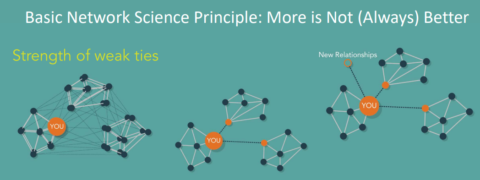
This idea of “lean weaving” also brings to mind the wisdom of network science as taught by Danielle Varda and colleagues at Visible Networks Lab. They make the point that when it comes to creating strong (resilient and regenerative) networks, more can be less in terms of the connections we have. Connectivity, like so much else in our mainstream economy and culture, can be ruled by a relentless growth imperative that is not strategic or sustainable and can cheat us of quality in favor of quantity.
More connections require more energy to manage, meaning there may ultimately be fewer substantive ties if we are spread too thin. Instead, the invitation is to think about how we mindfully maintain a certain number of manageable and enriching strong and weak ties, and think in terms of “structural holes.” For more on this network science view, visit this VNL blog post “We want to let you in on a network science secret – better networking is less networking.”
The COVID19 pandemic along with other mounting challenges may already be presenting the mandate and opportunity to get more keen and lean in our network thinking and weaving, not simply in the spirit of austerity and regression, but to cut an evolutionary path of resilience and regeneration (renewal). Network weavers of all kinds, what are you seeing and doing in this respect?
Originally published at Interaction Institute for Social Change
Curtis Ogden is a Senior Associate at the Interaction Institute for Social Change (IISC). Much of his work entails consulting with multi-stakeholder networks to strengthen and transform food, education, public health, and economic systems at local, state, regional, and national levels. He has worked with networks to launch and evolve through various stages of development.

The Power of Communities in Uncertain Times — Part 1
When systems collapse, people rise…
A tiny, invisible, and obscure virus has thrown the world into chaos. It has flummoxed and baffled nations, countries, politicians, scientists, doctors, presidents, principals, parents, students, in short, everyone. The gears of the post-Industrial world have ground to a juddering halt for the first time in history. A great pause button has been pressed. What multiple calamities over the last decade couldn’t achieve has been done by an invisible virus.
Do we see this as Armageddon or a chance to re-imagine a “world that works for all”? Can we appreciate the grand design?
We are witnessing unfathomable and profound suffering, particularly of the marginalized and the deprived, in a world that was horribly unprepared for a global calamity of this nature. Many are likening this period to the 1918 Spanish Flu, which swept across the world killing between 17 million and 100 million people worldwide. We don’t yet know what the death toll of Covid19 will be as the virus rampages across nations made fragile by inequity, flouting all efforts to contain it. What to me seems sad and surprising is the abject failure of high tech, big data, and big pharma in coming up with anything remotely groundbreaking in the face of this apocalypse.
Yet, in the midst of it all, can we hold our fear and uncertainty with compassion? Can we abide in this in-between space and listen to its messages?
Unfortunately, while the situation calls for “collective coherence,” we are experiencing divisive and disruptive politics; segregation of humanity based on religion, race, caste, class, creed, and gender; acrimonious and hostile behavior toward the marginalized and the minorities almost everywhere. These unfolding patterns reveal and underscore the emotional and spiritual schisms, estrangement, and hollowness afflicting societies today. The pandemic, on the other hand, is emphasizing a lesson that is the exact opposite of this sense of separation; it is repeatedly accentuating the deeply intertwined and inter-related nature of all life on this planet.
Are we truly sensing and listening? Do we feel it in our bones that none of us can be happy, healthy, and healed unless all of us are?
Sadly, we have become attuned to the Story of Separation where each one must fend for themselves, defeat the “enemies,” demolish the weak. We are used to waging wars. We can bomb, blast, bulldoze, battle, and build walls to keep the enemy at bay. Unfortunately, the coronavirus does not yield to guns or grenades. Hence, while we seek to “wage a war” against the virus — the language most nations are using — we are failing. Sadly, it also says something about our world that we are more prepared for war than to deal with global health, hunger, and humanitarian crises. No wonder, many governments are trying to handle this like a war. It exonerates them for being singularly unprepared.
The narrative of war is used as a legitimizing discourse. Wars inevitably have casualties. Wars require sacrifice. The narrative of war heroes is used to justify putting health workers at risk.
Not only is the analogy of war misplaced on factual grounds; it also misses the possibility to cultivate an imagination that builds on narratives of peace, solidarity and social justice — and to foster a more acute understanding of how we are all fundamentally dependent on one another as inhabitants of a shared planet.
How would a resilient, responsive, and anti-fragile world have responded to the crisis? What can we collectively do to co-create such a world?
What is becoming evident is that in the face of this apocalypse, it is not high tech and military prowess but high touch and compassion that is saving the day — doctors, nurses, healthcare workers, grocery storekeepers, teachers, journalists, civilians, NGOs. Communities of citizens are coming together to distribute food to the hungry, make masks for hospitals, help stranded migrant workers in India reach home, and much more.
I wonder, when we come out of this crisis, how will our priorities change? How will we honor what truly makes us human? What choices will we make as individuals and collectives to envision and reinvent a resilient and regenerative future?
For a long time, the world has been teetering on the brink of collapse, and now Covid19 has pitched us headfirst into the center of it. The fissures and fractures in our societies and nations, the rifts and ruptures in our politics and policies, and the crudely papered-over sordid and squalid brokenness of the systems stand brutally exposed. We suddenly find ourselves floundering in a liminal space of uncertainty, ambiguity, and unknowing. Lost and adrift emotionally, spiritually, and even physically, we are scrambling to make sense of a world that has fallen apart, whose center proved too weak to hold and sustain. And as the center collapses, we can see the edges rising.
Are we noticing the rise of ordinary citizens? What will it take for this sense of inter-connectedness to persist even after the crisis is past? How can we continue to act from this place of Interbeing?
Despite the superficial gloss and glitz of the 21st century life, we have failed to build resilient societies. We have collectively made choices over decades that have brought us to this point in our civilization’s trajectory. We have ignored signs and warnings of ecological crisis, social turmoil, and political perfidy. We have long forgotten that we are inextricably and indelibly connected to all human and more-than-human life on this planet. I believe that Covid19 is giving us an opening to pause, reflect, and re-imagine a different world — a world of greater equity, justice, well-being, and security for all sentient beings.
What does a more integrated, thrivable, and regenerative world look like? How do we align with our inner source of being? How do we befriend our future emergent selves?
It is asking us to go beyond our current selves, befriend our emergent selves, and co-create a more beautiful world from this liminal space that we are currently in. Perhaps no other writer or poet has captured the essence of it like David Whyte…
Just Beyond Yourself
Just beyond
yourself.It’s where
you need
to be.Half a step
into
self-forgetting
and the rest
restored
by what
you’ll meet.
I see hope arising even in the midst of anxiety and anguish. Our forgotten humanity — submerged in the false busyness of our days — is rising to the surface. I am seeing myriad groups of individuals going beyond their selves and coming together to serve the desperate and the deprived even as governments, strategists, and policy-makers flounder and resort to denial, de-sensing, and destroying every little possibility out of avarice, dishonesty, and egotism. But the “movement of movements” is refusing to be subdued. As Otto Scharmer rightly said, As Systems Collapse, People Rise.
How can we come together as evolutionary communities to heal the planet? How can we bring our gifts in service of a regenerative future?
Paul Hawken described this “movement of movements” beautifully…
I believe that we are part of a movement that is greater, and deeper,
and broader than we ourselves know, or can know.
It flies under the radar of the media, by and large.
It is non-violent. It is grassroots.
It has no cluster bars, no armies and no helicopters.
It has no central ideology.
A male vertebrate is not in charge.
And it is this power of communities that I want to write about. I have been urging organizations to reinvent themselves as communities and ecosystems in my articles, some of which can be found here, here, and here. I believe that the power of communities — people coming together around a shared vision, passion, and purpose — can transform the world and take us toward an anti-fragile, resilient, and regenerative future.
How can communities of diverse and committed individuals reinvent and co-create the metaphors, narratives, and structures for a thrivable future?
“There is no power for change greater than a community discovering what it cares about.” — Margaret J. Wheatley
Let me digress a bit and explain what I mean by “communities.” It is NOT an echo-chamber where homophily — a fancy word for group think — is the norm. Echo-chambers are designed around the concept of “Us” vs “Them” — a constant “othering” that keeps the world polarized, divided, angst-ridden, and adversary-filled. We can see this everywhere with human beings turning against fellow humans on the grounds of caste, class, creed, religion, race, sex, age, food habits, and every other criterion we can imagine. Social media — once the dream of democratic communication and the fount of collective intelligence — have had exactly the opposite effect. It has exacerbated polarization, group-think, and schism under the guise of globally interconnected networks.
Instead of celebrating the vibrant, joyous, and abundant diversity that makes up our world, we are striving to create a monochrome palette that will render our planet dreary, dull, and dangerous. Our very regeneration and resilience lie in diversity and difference. This is where, I believe, consciously designed communities come in. Communities come into being when diverse individuals come together in the service of a purpose larger than themselves. A purpose that feels aligned with their own calling and invites all on a co-creative journey that moves them toward the purpose.
As the old world falls apart, what is emerging are networks of individuals stepping forward to take care of the brokenness, to heal the wounds with whatever resources are available to them, to step beyond the self into a larger space of oneness. They are as diverse as they come and yet they are bound together by a vision of a fairer, just, and a kind and compassionate world. Most of these communities have formed spontaneously in response to the appalling predicaments and miseries being faced by the dispossessed everywhere.
Such communities are built on voluntary participation based on inner alignment and coherence of purpose. They foster a deep sense of belonging, where everyone contributes from their sense of selfhood and unique capabilities. Such synergy cannot be forced but arises from an intermingling of varied perceptions; thus, the whole is always greater than the sum of the parts. Something is born that didn’t exist before. The intangible is expressed, the unthought is revealed, the elusive becomes explicit. The impossible gets done. And a “new way of being” is birthed. Hope refuses to die. New metaphors, narratives, and structures are co-created. Such is the power of intentional communities.
As the world teeters on the brink, we need such compassionate communities to be compasses that can guide us toward a future different from our past, that can become the “imaginal cells” of a more beautiful world our hearts know is possible.
May the best among us, the most visionary, the most inclusive, be the imaginal cells — for now we are in the soup. The outcome of disasters is not foreordained. It’s a conflict, one that takes place while things that were frozen, solid and locked up have become open and fluid — full of both the best and worst possibilities. We are both becalmed and in a state of profound change.
I have explored the qualities and prerequisites of such intentional and conscious communities in Part 2 of this post.
*The tagline of this post is inspired by Otto Scharmer’s article of the same name.
Read part 2 HERE
Originally published HERE on June 1, 2020
Sahana Chattopadhyay is a global Speaker, Writer, Master Facilitator, Organization Development Consultant, and Coach. She works at the intersection of Complexity, Human Potential, Organizational Transformation, Systems Thinking, and Emergence. Her passion is to enable organizations to develop the capacities, skills, and mindsets to become “thrivable” in the face of uncertainty and ambiguity.
PLEASE DONATE to help Network Weaver continue in it’s mission to offer free support and resources to networks worldwide.
How learning ecosystems evolve and how can leaders weave the whole change process
Weaving educational ecosystems in our districts and cities has become one of the greatest worldwide challenges for our systems to enhance learning and equity for the new era. The UNESCO (2020) publication “Education in a Post-COVID World: Nine Ideas for Public Action” indicates that those communities that have responded in an innovative, effective and resilient way to the crisis of COVID-19 are those who had shown greater collaboration between teachers, and between school and community actors. These ideas are also shown by other recent studies on school networks by Daly (2020) Azorín (2020) and Ion & Brown (2020). The reality of this pandemic has reminded us as a species that we are deeply connected to one another (Lancet 2020).
Learning ecosystems are social infrastructure formed by diverse actors that share a purpose, and engage in collaboration to co-design and co-implement innovative responses to existing social and educational challenges. Learning ecosystems provide a new understanding of education from an ecosystemic perspective of actors and their relationships; they challenge traditional organizational boundaries while providing place-based focus on local schools, neighborhoods, cities, or transnational networks; they are based on systemic and cross-sectorial collaboration; and pursue systemic impact (Díaz-Gibson et al., 2020). Thus, one of the most relevant questions in the global educational sphere is how learning ecosystems can be intentionally supported, cultivated and weaved, and how these place based ecosystems grow and evolve over time.
A natural way to approach and better understand learning ecosystems’ development and growth process is to dig into how biological ecosystems change and evolve. Science shows us that collaboration between organisms and species, not struggle for survival that allows ecosystems to evolve and species to truly flourish. As Darwin defended, if humans are the most advanced species it’s because we have the most advanced means of collaborating, and our communities care for the most vulnerable, the sick, the elderly and impoverished. Thus, collaboration is actually a natural and social driver for species survival and for thriving communities.
Ecosystems evolution is drawn byecological succession, understood as the process of change in the species structure of an ecological community over time, where a network of different populations and organisms coexist and interact. The time scale for a biological ecosystem to evolve can be decades -for example, after a wildfire-, or even millions of years. The community begins with relatively few pioneering plants and animals and develops through increasing complexity until it becomes stable or self-perpetuating as a climax community. The engine of succession becomes the impact of established organisms upon their own environments. In other words, intraction among species and within the environment are the drivers of change in all ecosystems.
Colleagues in the NetEduProject have been studying networks, partnerships and ecosystems that enhance learning and equity in the last two decades (Daly, 2010; Riera and Civís, 2008; Díaz-Gibson, 2014; Díaz-Gibson et al, 2017 and 2020). Our learnings show that the development of learning ecosystems and their relational networks become a taugh and complex process that needs time and efforts to be properly cultivated, weaved, and consolidated. Personal relationships require time and intention to emerge and sustain, and their growth involves devoting intentional efforts. With this in mind, Mireia Civís and I have worked on a model to cultivate and weave learning ecosystems in three non linear steps, where we identified some patterns of evolution. Thus, to weave learning ecosystems we need to focus on different conditions depending on its level of maturity:
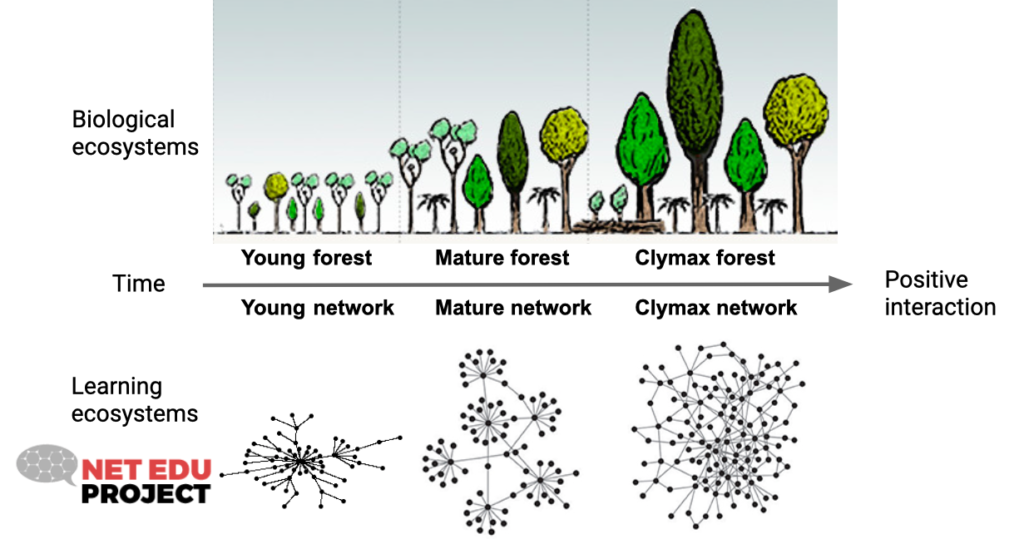
- The initial stage of the ecosystem’s growth is shown in the image as ‘Young network’. Following the idea of ecological succession, ecosystems change depends on the initial conditions found in the social network, and the type and number of actors, and the quantity and quality of relationships draw an initial starting point. At this stage, it is necessary to develop a structural design to cultivate the social foundations that will sustain the whole ecosystem: trust, empathy, recognition of others and collective purpose. It is the moment where members share goals and expectations, adjust rhythms and levels as new relationships are woven. This social capital will sustain the future development of the whole ecosystem of people and organizations, and will become the pillars that pave the way for a new collaborative culture. At this point, collective learning is a priority flow that needs to be planned, at the same time, will be part of the network’s own working culture. Ecosystems can take from one to three years to move into a second stage, and only the construction of solid intangible pillars will allow networks to change and evolve.
- The second stage, named as ‘Mature network’, is more difficult to limit in time as its duration depends on several factors beyond the initial network conditions, such as investment, political support or system coherence. Here, we need to move towards the development and sustainability of social networks, and one of the aims is to consolidate the transition from individual to institutional commitment. It becomes a stage where we want to sustain a collaborative model of action and where we must continue to feed the social intangibles generated. At the same time, new strategies are being sought to assess and increase the impact of collective action. Once networks are weaved, they must come to live and make sense for themselves, they may not depend (or only depend) on external leadership. Also, at this point they must generate clear benefits for their participants according to the established objectives. The design and the structures need to be flexible and readjust to optimize resources to respond to needs and expectations of the people and organizations involved, also drawing clarity on paths for local based outcomes to emerge.
- Finally, the third stage named as ‘Climax network’, is also imprecise in time for the same reasons. In this stage, the ecosystem creates intentional infrastructures for its sustainability beyond personal relationships, establishing institutional agreements, coordination documents, new opportunities for participation, among others. These strategies are aimed to facilitate interaction and self governed initiatives within the network. Here the ecosystem acquires an optimal level of maturity that is evidenced by consolidation of a new culture, where new rules and new ways of doing are practiced in professional and institutional levels. The network organization within the ecosystem in this stage tends to be characterized by a collaborative governance. People are empowered to open new cycles of revision and regeneration in order to create new meaning and new opportunities for individuals and for the collective.
We believe these three fluid and organic steps can inform the type of systemic support needed in the evolution of ecosystems to enhance social capital, learning and equity in our communities and cities across the globe. In the NetEduProject we are ‘hands on’ working on learning and sharing new leadership strategies that can move these social and participatory structures forward over time. As shared in the beginning of this post, science has shown that collaboration is a natural driver for species survival. In this new era we are all embracing, humans and social systems really need to improve our collaborative competences to better take care of one another and create a thriving world for all.
originally published at NET EDU PROJECT
I am a 24-hour learner, passionate collaborator and weaver. Interested in weaving between contexts, disciplines, research and practice to enhance collective impact. I believe that education is a tremendous weapon to change the world.
PLEASE DONATE to help Network Weaver continue in it’s mission to offer free support and resources to networks worldwide.
June Holley's Network Weaving Institute

June Holley has created a new entity, the Network Weaving Institute, so that you can easily track and collaborate in her writing and set up time for consultations with her.
June has been weaving networks, helping others weave networks and writing about networks for over 40 years. She is currently increasing her capacity to capture learning and innovations from the field and sharing what she discovers through blog posts, occasional virtual sessions and a forthcoming book. Topics she will be focusing on in the coming year include:
- a communications system where weavers can support each other and share information
- a place to share what people are learning from their practice,
- a set of resources drawn from emergent practice,
- a set of practices to address inequities and
- a social media strategy to draw more people around the globe into the network weaving network.
Her Practice
In 1981 June discovered complexity science and became intrigued with the process of transformation. How could communities change in ways that would make them good places for everyone?
For the next two decades, she worked with others in Appalachian Ohio to catalyze cascades of network experimentation, observing and documenting the dynamics that enabled many hundreds of people to start and then expand businesses in rural Appalachia. With these newly minted entrepreneurs, she mobilized dozens of area organizations to collaborate, self-organize and create an environment that would help these businesses innovate, expand and work together to create an effective support system for networked entrepreneurs.
After twenty years as executive director of the Appalachian Center for Economic Networks (ACEnet), she stepped down to devote her energies to helping communities around the globe form system shifting, self-organizing networks by training and supporting network weavers and helping new networks form.
The hundred or so network projects she has advised range from local networks to international ones; included networks focused on a specific sector such as food access or health access as well as cross sector initiatives such network leadership networks; reached from small rural networks with a few dozen participants to massive networks with thousands of international participants including the networkweavers network. All recent projects have had a strong equity focus and a commitment to dismantling racism and hierarchy. June has led hundreds of interactive workshops – many of them virtual – on applying a network approach and authored the Network Weaver Handbook and over 20 blog posts.
Current and Future Directions: Network Weaving Institute
In the four decades that June has been supporting networks, they have shifted from being a fringe phenomenon to being the favored way of responding to our complex world. But networks come in all shapes and sizes and we still have only rough guidance in knowing which kinds of networks are best for different situations and how they can be most effectively structured.
During the coming decade, June is stepping back from major consulting projects to focus on taking all that she and others have learned about networks with transformative capacity and writing a series of articles (which may well morph into a book or set of videos). This will be done collaboratively as much as possible – sharing her writings in google docs open to commenting and/or joint editing.
June will also continue to develop materials and modules that can be used by individuals or networks to deepen their understanding of networks.
In addition to writing June will identify a few high leverage cross network efforts (connecting more environmental networks to networks promoting equity and the need to dismantle racism and hierarchy, for example, or helping national networks provide more support to local self-organizing efforts) and will provide opportunities to explore network potentials at no cost. If you know of two or more networks that could benefit by being connected, please let June know!
Finally, June will occasionally offer 60 minute one time advice and exploration sessions to networks who have a specific challenge they would like to discuss. Visit the Consultation page to set up an appointment
Click HERE to Visit Network Weaving Institute

A New Year - A Happy Beginning
Happy New Year! The Leadership Learning Community is very happy to kick off the new year by becoming home to NetworkWeaver. This exciting new collaboration is an example of a relationship based on human connection, values alignment and trust.
We anticipate that this new relationship will help us collectively deepen our work; increasing support for BIPOC people in the network space, further exploring the intersections of networks and leadership and strengthening our connections to social justice and transformative change work.
2020 was a tumultuous year, its challenges and opportunities such as the COVID 19 pandemic, racial justice uprisings, and threats to democracy, continue in 2021.
This year, we hope to apply the learnings from 2020 about the importance and power of networks by increasing our investment in and commitment to working in equity-centered, collaborative and networked ways, and we look forward to partnering with you in the process.
Wishing you and yours a wonderful New Year,
The Leadership Learning Community & NetworkWeaver Team
ABOUT THE AUTHOR
Ericka Stallings is the Co-Executive Director of the Leadership Learning Community (LLC) a learning network of people who run, fund and study leadership development.
Please consider donating to our fundraiser to help us continue in this important work.
June's End of Year Message
As the year ends, so will my role at the helm of networkweaver shift as I hand over the oversight to the wonderful Leadership Learning Community.
It’s been a rewarding journey, working closely with the competent and delightful team of Marie DeMange, Jason Pollack, and Nicole Shanks to co-design the site, keep it operating and full of wonderful stories and resources from the field.
I also want to thank all the Network Weaving Consultants who have joined the site and have taken on the role of providing support and expertise to the ever expanding set of networks around the world who can become stronger and expansive with their guidance.
I will, of course, still be writing (and hopefully more frequently than in the past!) for the blog, developing new resources, and discovering writing and resources by others. Again, I encourage all of you to consider submitting anything you have written about networks - especially about networks that center equity - as we want to expand the number of people writing for the blog.
I know many of you have benefited from the networkweaver site and/or conversations with me, and I am hoping that you will give a donation in honor of that! It would be a gift I would truly treasure!
For those who are interested in what I’m going to be writing:
- The current title is Transformation: Co-creating a world that is Good for All of Us
- I’m starting first with the idea of a network self, what that means and how we might see ourselves and interact differently once we start speaking from our network self. More in the coming months….
- If you know of articles, books, websites or other resources you think I should be looking at, please send to me juneholley@gmail.com.
- I’m hoping to experiment with various forms of collaborative writing and will let you know soon how you can be involved, if you are interested.
I’ll be releasing a new site for my writing and consultation soon.
Thank you for you for your continued support of Network Weaver. I look forward to a new year of growth and transformation.
June Holley

